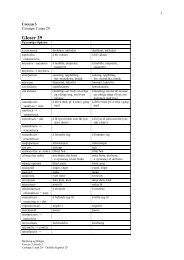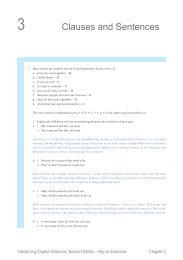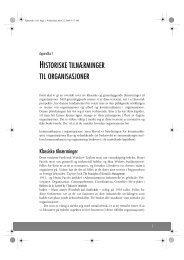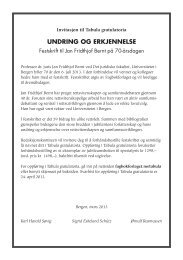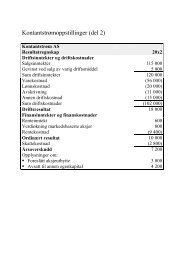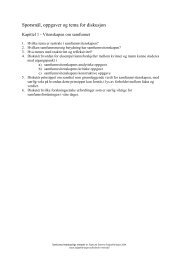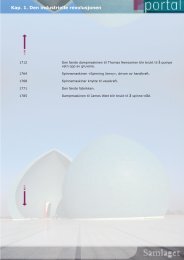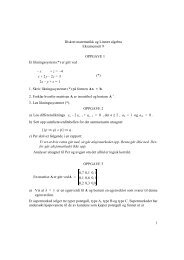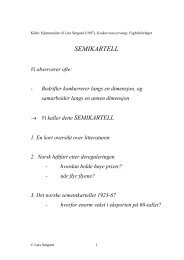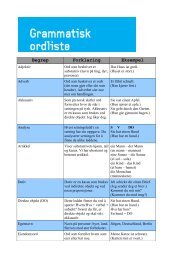price discrimination in the airline industry - Fagbokforlaget
price discrimination in the airline industry - Fagbokforlaget
price discrimination in the airline industry - Fagbokforlaget
Create successful ePaper yourself
Turn your PDF publications into a flip-book with our unique Google optimized e-Paper software.
employee buys an air ticket, receives <strong>the</strong> frequent flyer bonus, and <strong>the</strong> employer pays for<strong>the</strong> ticket. Obviously, <strong>the</strong>re are some potential <strong>in</strong>centive problems <strong>in</strong> such a system. Theemployee has no strong <strong>in</strong>centives to make a cost efficient decisions concern<strong>in</strong>gtravel<strong>in</strong>g. On <strong>the</strong> contrary, each employee can receive large bonuses from <strong>the</strong> frequentflyer program if s/he travels more and travels more expensive than what s/he o<strong>the</strong>rwisewould have chosen to do. This is an argument say<strong>in</strong>g that such a system may lead toexcess consumption of this particular good, and <strong>the</strong>reby an excess cost burden for firmsand for <strong>the</strong> society.Second, we have so far assumed monopoly. If <strong>the</strong>re is more than one active firm,or one active and one potential firm, it is important to discuss how a frequent flyerprogram affects competition. In <strong>the</strong> literature, it is po<strong>in</strong>ted out that frequent flyerprograms are loyalty programs. 8 The consumers are becom<strong>in</strong>g loyal to one firm, toaccumulate frequent flyer bonus on this particular firm. On <strong>the</strong> o<strong>the</strong>r hand, firms competeto attract new consumers that can become loyal. Although <strong>the</strong> net effect is ambiguous <strong>in</strong><strong>the</strong>ory, <strong>in</strong> his survey Klemperer (1995) concludes that loyalty programs typically aredetrimental to welfare:‘While <strong>the</strong>re are exceptions to <strong>the</strong>se conclusions, <strong>the</strong>y suggest a presumption that publicpolicy should discourage activities that <strong>in</strong>crease consumer switch<strong>in</strong>g costs (such asairl<strong>in</strong>es’ frequent flyer programs), and encourage activities that reduce <strong>the</strong>m’ (p. 536)Accord<strong>in</strong>g to his conclusion, frequent flyer programs are expected to haveanticompetitive effects. In particular, it is reason to be aware of <strong>the</strong> possible effect <strong>in</strong> asett<strong>in</strong>g with one (or a few) established firm(s) and a potential entrant. If established firmshave many members <strong>in</strong> <strong>the</strong>ir frequent flyer programs, an entrant can f<strong>in</strong>d it difficult tocapture those consumers that are more or less loyal to <strong>the</strong> established firms.8 See, for example, Klemperer (1984, 1995) and Carns (1990).© Steen and Sørgard 18



